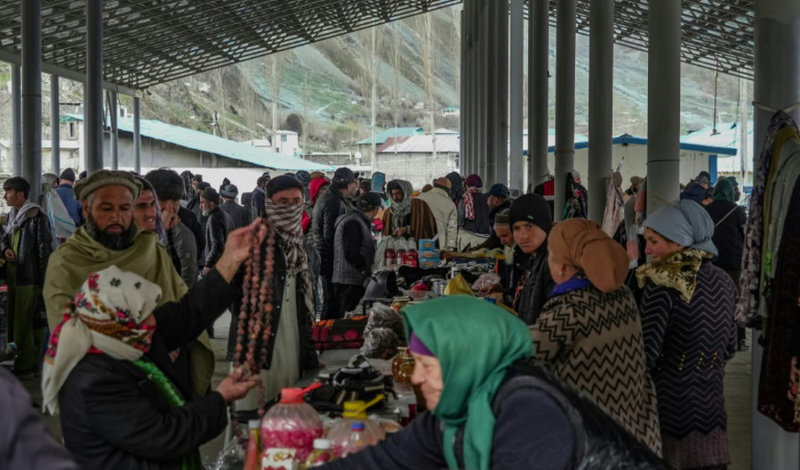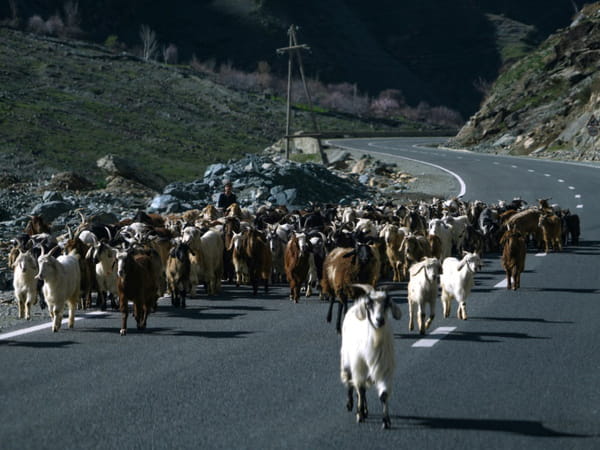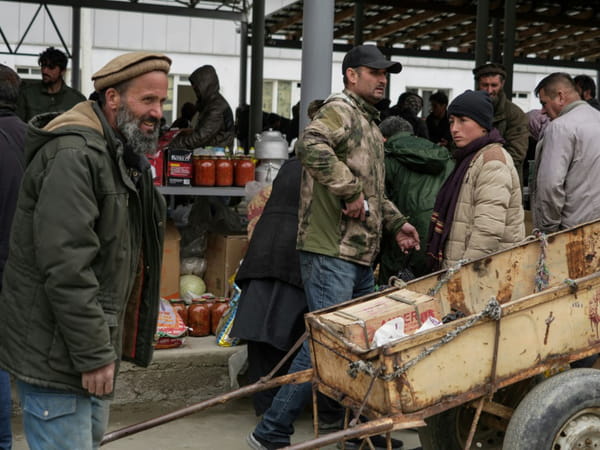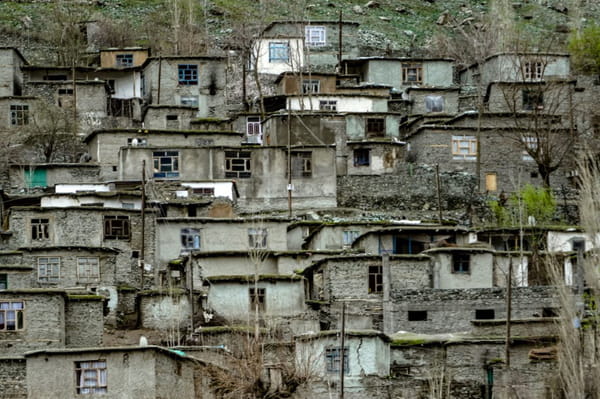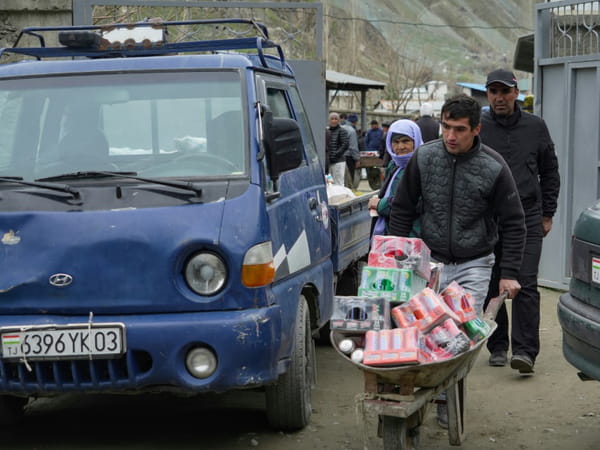Saturday à Kalai Khumb, in the Pamir Mountains, we negotiate, we sell and we buy: this market &agrav; The border between Tajikistan and Afghanistan is one of the rare points of contact between these countries since the return of the Taliban. “We can buy clothes, sweets, tea, or even construction materials”, lists Subhanuddin Haji Qashem, an Afghan buyer met by AFP in this Tajik village of Upper Badakhshan, in some six hours' drive east of the capital Dushanbe. We also sell wool carpets, saffron, dried fruits, laundry detergent, chickens…: we find everything, or almost everything, at this bazaar located in a gorge on the banks of the Piandj river. Its muddy waters mark the border between the two Central Asian countries, like the surrounding peaks which exceed 4,000 meters in altitude. On the north bank of the Piandj, hanging from the cables of the rusty bridge, the Tajik flag with three bands – red, white and green, with a golden crown in the center – faces that of the Taliban, with the shahada, the profession of faith of Islam, in black Arabic characters on a white background. Goats walk along the road in Tajik Darvoz district, near the Afghanistan-Tajikistan border, March 31, 2024 © AFP – Amir ISAEV “We are really happy that the market has reopened”, underlines Subhanuddin Haji Qashem, sixty-year-old with a white beard. Because this rare place Cross-border exchanges supporting local commerce — there are less than ten on the more than 1,300 kilometers of common border — is essential for the supply of thousands of inhabitants of these poor and isolated areas. – Bazaar under surveillance – “This market has been operating since 2004, but due to Covid-19 and political instability in Afghanistan, it had to close”, explains Dilovar Kossimi, local Tajik official, to AFP, referring to the return of the Taliban to power in Kabul in the summer of 2021. The Kalai Khumb market, Tajikistan, March 30, 2024 © AFP – Amir ISAEV Its closure was a “real blow”, explains Bahram Rahimi, an Afghan dried fruit seller. “We could neither buy the necessary goods nor sell our products,” he said. The market reopened in September 2023, only to close again briefly after the Tajik authorities announced that they had killed “three terrorists from the Jamaat Ansarullah jihadist group” nearby, active in this border area. Now open again, the bazaar is closely monitored and patrolled by Tajik law enforcement: plainclothes secret service agents, uniformed police officers and armed border guards. The latter filter entries and systematically confiscate Afghans' cell phones, noted the AFP, which obtained rare authorization to film. Despite this surveillance, the inhabitants of the two banks of the Piandj come closer and trade, united by the same Persian language, called Tajik in Tajikistan and Dari in Afghanistan. More than a quarter of Afghanistan's 40 million people are ethnically Tajik, according to estimates. On the market, Afghans can be distinguished from Tajiks by their outfit: the Afghans wear the pakol, a woolen hat with bulges, baggy pants and a full beard, which is absent among the Tajiks. – “Lifeline” – “We order from each other what we need”, explains Mohammad Shafaq Azizi, a rice seller from 28 years. An Afghan village near the border with Tajikistan, in the Darvoz district, March 30, 2024 © AFP – Amir ISAEV “There is a market on the Afghan side, but in Tajikistan we can buy products that do not exist here”, such as fresh fruits and vegetables, continues Mr. Azizi.< /p> This seller claims to “earn up to 25 euros” per market, while according to the United Nations, 85% of Afghans live on less than a dollar (less than a euro ) per day. Because the return of the Taliban and the establishment of an Islamic Emirate put a stop to international aid to Afghanistan, in the midst of a humanitarian crisis. Even with Tajikistan, trade peaked at $97 million in 2023, according to Dushanbe, essentially corresponding to Tajik electricity sales to Kabul. Political dialogue between the two neighbors also remains minimal. Tajik leader Emomali Rakhmon — presented as the “leader of Tajiks around the world” by a huge sign hanging on the mountain facing the Afghan shore — regularly criticizes the Taliban for their treatment of Tajiks in Afghanistan. The Kalai Khumb market, Tajikistan, March 30, 2024 © AFP – Amir ISAEV In this context, the Kalai Khumb market is “a real lifesaver”, says Firouz Abdoulloev, a Tajik furniture seller. But the call for air is short-lived. Shortly before 1 p.m., whistles sound. This is the dispersal order from the Tajik security forces: all Afghans must recross the bridge before the start of prayer. The hubbub subsides and the stalls empty, until the following Saturday. All rights of reproduction and representation reserved. © (2024) Agence France-Presse